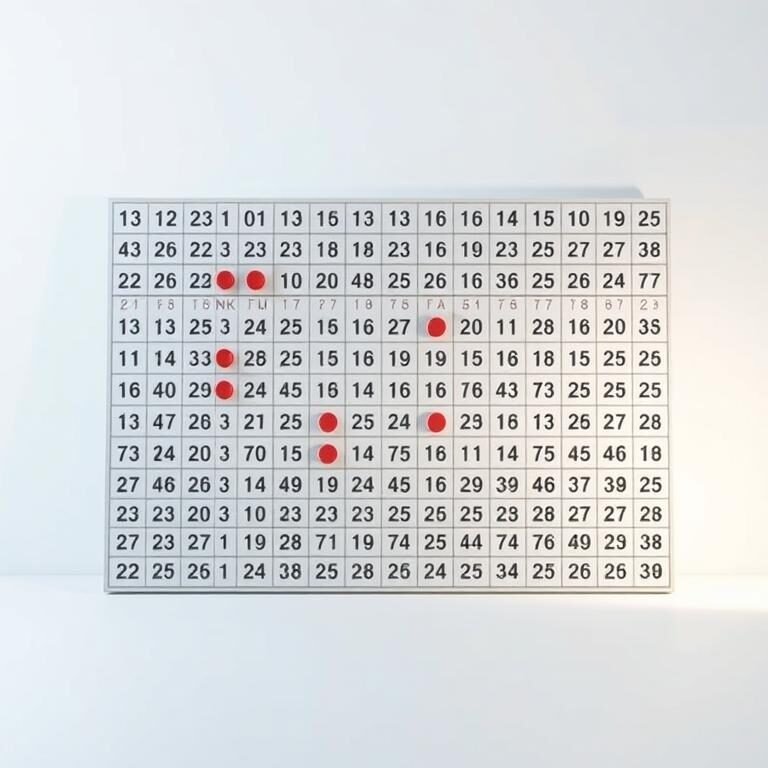The gaming world is about to see a big change. The PlayStation6 is coming, and it’s expected to arrive between 2026 and 2028. If you love gaming, you’re probably excited to hear about the latest news and features of this new console.
The PS6 rumors are buzzing, and it’s clear the next PlayStation console will change the game. Let’s look at what’s coming your way.
Key Takeaways
- Expected release window for PS6: 2026-2028
- Enhanced gaming experience with advanced specs
- Rumors suggest significant upgrades over previous models
- Next-generation console to revolutionize gaming industry
- Immersive gaming experience with cutting-edge technology
The Evolution of PlayStation: From PS1 to PS5
Sony has always led in gaming tech, from the first PlayStation to the PS5. Each step has brought big changes to gaming.
Key Innovations Through PlayStation Generations
The PlayStation journey is filled with major breakthroughs:
- 3D Graphics: The original PlayStation introduced 3D graphics, changing gaming forever.
- Online Gaming: The PS2 made online gaming possible, changing how we play together.
- Motion Control: The PS3’s Sixaxis controller added a new level of interaction.
- Virtual Reality: The PS4’s PSVR support brought virtual reality to gamers.
These innovations have made gaming better and pushed the industry forward.
PS5’s Market Position and Limitations
The PS5, launched in 2020, quickly became a hit. It offers:
- Ray Tracing: It has better graphics, including ray tracing, for more realistic games.
- SSD Storage: SSD storage makes games load faster, improving the gaming experience.
But the PS5 also has its challenges:
- Supply Chain Issues: A global chip shortage has made PS5s hard to find.
- Competition: The PS5 faces tough competition from Xbox Series X/S, driving innovation.
For more on PlayStation’s history, check out the evolution of PlayStation from PS1 to.
Understanding Sony’s Console Development Cycle
The wait for the next PlayStation console is growing. Looking at Sony’s past can give us clues. Sony has always led in console gaming. Knowing their cycle is key for gamers and fans.
Historical Release Patterns
Sony has released new consoles every 6-7 years. This has shaped the gaming world. Let’s look at when they released their consoles before:
| Console | Release Year | Years From Previous Generation |
|---|---|---|
| PlayStation | 1994 | – |
| PlayStation 2 | 2000 | 6 |
| PlayStation 3 | 2006 | 6 |
| PlayStation 4 | 2013 | 7 |
| PlayStation 5 | 2020 | 7 |
The table shows Sony’s steady cycle. The latest was the PlayStation 5 in 2020. Learn more about PlayStation’s history on the official PlayStation website.
How to Predict the PS6 Launch Window
To guess when the PS6 will come out, we look at Sony’s past and current trends. With a 6-7 year cycle, the PS6 might arrive in 2026-2027. But, tech progress, market needs, and competition can change this.
Current Development Status Indicators
Even though Sony hasn’t said much about the PS6, signs suggest it’s being worked on. These include:
- Patent filings for new tech
- Job ads for next-gen console work
- Industry rumors and leaks
Watching these signs can tell us about the PS6’s features and when it might come out.
How to Interpret Sony’s Patent Filings for PS6 Clues
To stay ahead, look at Sony’s patent filings for PS6 hints. Sony’s vast innovation pipeline shows in their patents. They give a peek into gaming technology advancements.
Finding and Reading PlayStation-Related Patents
Find Sony’s patents on sites like the United States Patent and Trademark Office (USPTO) and the World Intellectual Property Organization (WIPO). When you read these patents, watch for:
- Descriptions of new hardware components
- Innovations in user interface design
- Advancements in playstation accessories
It’s key to understand the technical terms in these patents. They often describe hardware and software interactions in detail.
Connecting Patent Technologies to Possible Features
After finding relevant patents, link the technologies to PS6 features. For example, an AI patent could mean the PS6 will have better game development or NPC behaviors.
Focus on these areas:
- Graphics processing and rendering improvements
- Controller enhancements like haptic feedback or adaptive triggers
- VR or AR technology innovations
By studying these patents, you can see what the PS6 might offer. This helps you understand how playstation games could change.
Decoding the Rumored PlayStation6 Hardware Specifications
The PlayStation 6, Sony’s next gaming console, is expected to have amazing hardware. It’s said to have big upgrades in many areas.
Processor and Graphics Expectations
The PS6 might use a custom AMD chip, possibly based on Zen 4 or later. This could make it much faster than the last one. The graphics unit is also set to get a big boost, possibly with RDNA 3 or later tech. This would make games look better and run smoother.
Key Processor and GPU Features:
- Custom AMD Zen 4 or later CPU architecture
- RDNA 3 or later GPU architecture for improved graphics rendering
- Potential for increased clock speeds for better performance
Storage Solutions and Memory Advancements
The PS6 is also expected to have better storage. It might have up to 2TB of space, using fast PCIe 5.0 NVMe SSDs. This means faster loading times and more room for games.
Memory advancements are also coming. The console might use GDDR7 or later memory. This will help it handle the demands of new games.
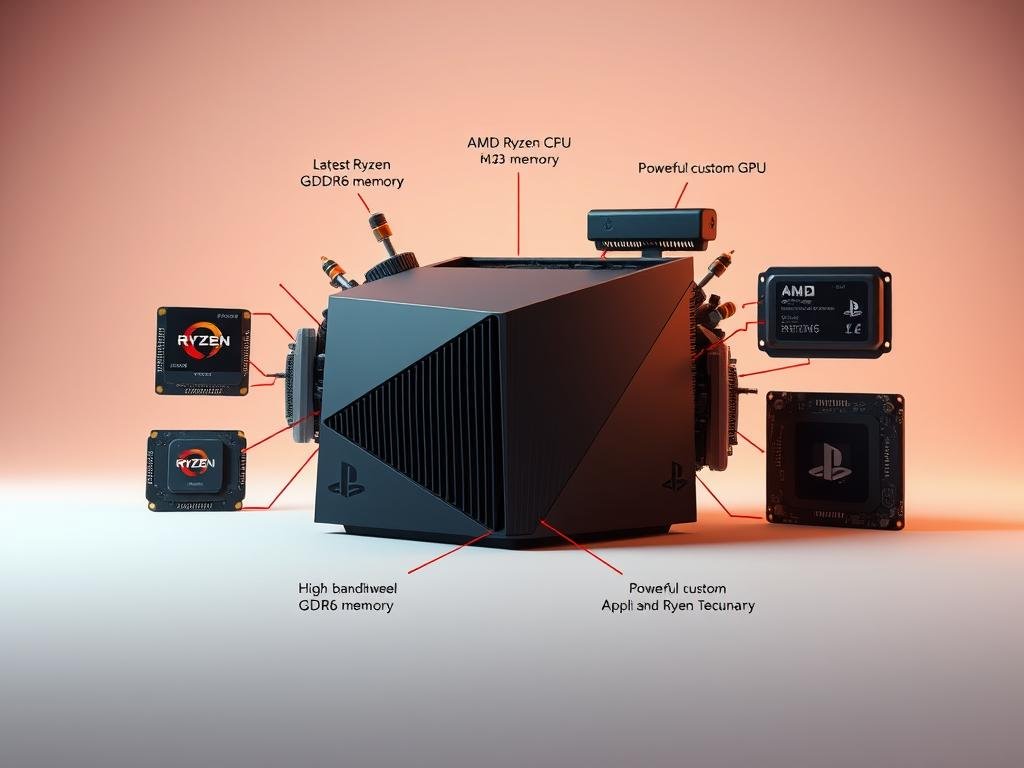
Thermal Management Innovations
As consoles get more powerful, keeping them cool is key. The PS6 is likely to have new cooling tech. This could include vapor chambers or better air cooling to handle the heat.
| Component | Rumored Specification | Potential Benefit |
|---|---|---|
| CPU | Custom AMD Zen 4 or later | Improved processing power |
| GPU | RDNA 3 or later | Enhanced graphics performance |
| Storage | Up to 2TB PCIe 5.0 NVMe SSD | Faster loading times and increased storage |
| Memory | GDDR7 or later | Increased memory bandwidth |
While we wait for official news on the PlayStation 6, these rumors give us a sneak peek. They show the exciting tech that could change gaming in the future.
Next-Generation PlayStation Controller Technologies
Gamers are excited to see what Sony has planned for the PS6 controller. They’re looking forward to haptic feedback and adaptive triggers. The gaming world is buzzing with anticipation for the next console.
DualSense Evolution Predictions
The DualSense controller for PS5 has raised the bar with its features. For the PS6, we expect even better technology. Enhanced haptic feedback could make games feel even more real.
Haptic Feedback and Adaptive Trigger Advancements
The DualSense’s haptic feedback is a big hit. The PS6 controller might have advanced vibration motors for more sensations. Adaptive triggers could also get a boost, allowing for deeper game interactions.
New Input Methods and Accessibility Features
The PS6 controller might bring new ways to play games. This could include advanced gesture recognition or easier controls. Accessibility features will also be a key focus, making the controller for everyone.
As Sony keeps pushing the limits, the PS6 controller promises a leap forward. It will offer a more immersive and accessible gaming experience for all.
Analyzing PS6 Design and Form Factor
The PlayStation 6 is rumored to be in development. Its design might show a big change towards sustainability and modularity. As we look forward to the next-generation gaming console, several factors will shape its design and form factor.
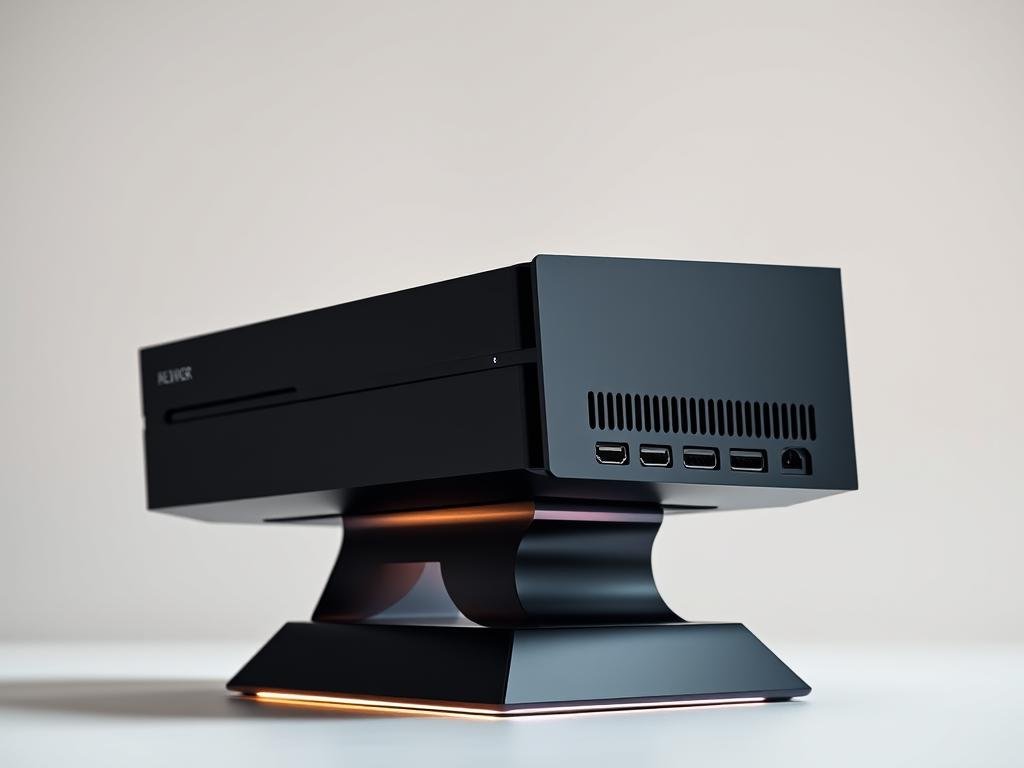
Size and Aesthetic Trend Analysis
The size and look of the PS6 will be influenced by current trends and tech advancements. Expect a sleeker design and possibly a smaller size thanks to new component tech. The sustainable tech trend will also shape the console’s design.
Sustainability Initiatives in Hardware Design
Sustainability is key in the tech world, and the PS6 will likely have eco-friendly features. It might use recyclable materials, energy-saving components, and designs that make repair and upgrades easy. Gamers will appreciate the effort to lessen the console’s environmental impact.
Modular Component Possibilities
Modularity is another trend that could change the PS6’s design. A modular console lets you upgrade parts like the GPU or storage without replacing the whole system. This could make the console last longer and appeal to gamers who want the latest tech, including virtual reality advancements.
The design and form factor of the PS6 will be vital in shaping the future of gaming. By focusing on sustainability, modularity, and looks, Sony can make a console that goes beyond what gamers expect worldwide.
The Future of Game Distribution on PlayStation6
The gaming world is changing fast, and the PS6 will bring new ways to get and play games. Technology and how people play games are both moving forward. This means big changes for how we enjoy games.
Digital vs. Physical Media Trends
More and more, games are being sold digitally. This is because digital downloads are easy and cloud gaming is growing. The PS6 might focus more on digital games, making physical copies less important.
Key statistics:
| Year | Digital Game Sales (%) | Physical Game Sales (%) |
|---|---|---|
| 2020 | 60 | 40 |
| 2022 | 70 | 30 |
| 2024 (Projected) | 80 | 20 |
Subscription Services Evolution
PlayStation Plus and PlayStation Now will likely change with the PS6. These services might offer better plans, like cloud gaming and a huge game library for a monthly fee. The PS6 could make these services a key part of gaming.
Game Ownership in the Next Generation
Game ownership might change a lot with the PS6. As digital sales grow, owning games could mean licensing or subscribing instead. This could change how we play and access our games.
Potential changes in game ownership models:
- Shift from ownership to licensing
- Increased focus on subscription-based services
- Greater emphasis on cloud gaming
The future of game distribution on the PS6 looks exciting. As we move towards digital gaming, it’s important to understand these changes. This will help us enjoy the next generation of gaming fully.
How PlayStation VR Will Integrate with PS6
The next PlayStation console is set to change VR gaming. It will build on what came before. Knowing what’s new with PlayStation VR is key for the PS6.
The PSVR2 has made big strides, but it’s not perfect. We’ll look at what’s missing and what might come next.
PSVR2 Limitations and Future Improvements
PSVR2 has improved VR, but it’s not without its issues. These include low resolution and being tethered. Future updates might fix these problems.
- Enhanced Resolution: Better displays could make games feel more real.
- Wireless Connectivity: No cables could make playing easier and more fun.
Wireless VR Possibilities
Wireless VR is a big leap forward. The PS6 will likely make wireless VR even better. This means less lag and a smoother game feel.
Expect these wireless VR upgrades:
| Technology | Benefit | Impact on Gaming |
|---|---|---|
| Advanced Wi-Fi | Reduced Latency | More immersive experience |
| Improved Compression | Better Video Quality | Enhanced Visuals |
Mixed Reality Gaming Experiences
Mixed reality (MR) mixes AR and VR for a new kind of game. The PS6 will likely take MR gaming to new heights.
Mixed reality gaming could bring:
- Interactive worlds that mix real and virtual.
- Deeper multiplayer games that feel more real.
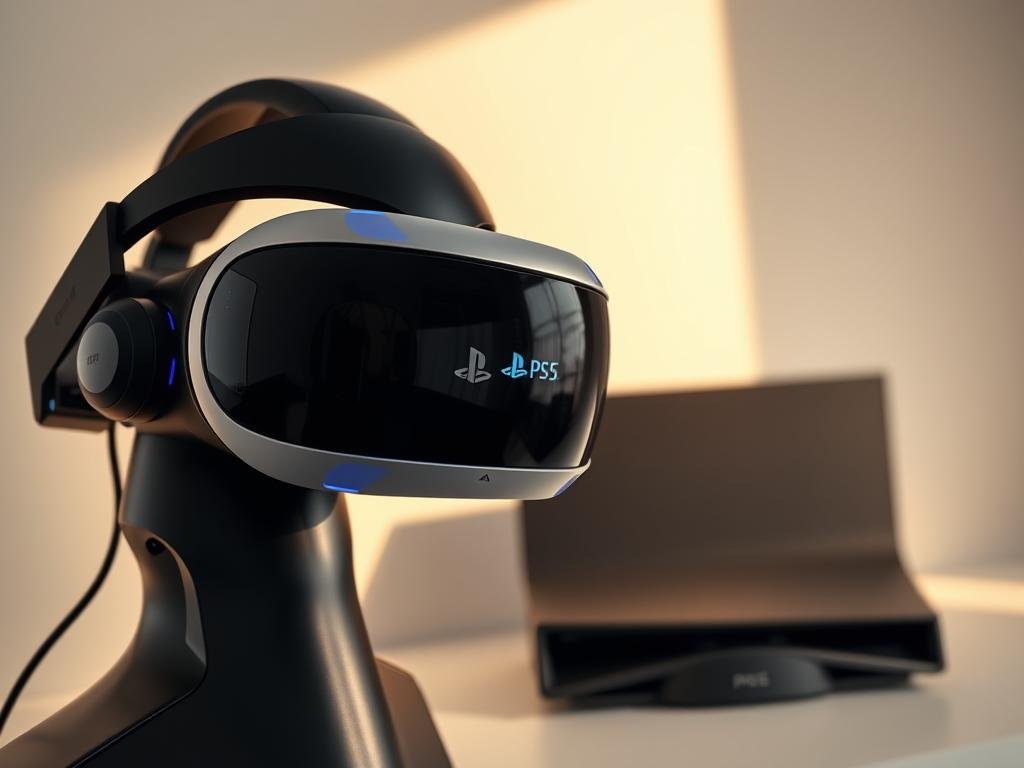
The future of gaming looks bright with PlayStation VR and PS6. It promises a more real and fun gaming world.
Cloud Gaming Infrastructure for PlayStation6
The next-generation PlayStation6 is rumored to have a strong cloud gaming setup. This will make your gaming better. Sony plans to use its current tech and innovate more for a smooth gaming experience.
PlayStation Now Transformation
PlayStation Now has been a big name in cloud gaming, letting users stream games without downloads. With the PS6, we might see a big change in this service. Expect better streaming quality, less lag, and a bigger game library.
This change could also mean better integration with the PS6 hardware. You might be able to start playing on your console, PC, or mobile device where you left off. This is thanks to the cloud’s power.
Edge Computing for Gaming
Edge computing is key in gaming, as it cuts down on latency by processing data near the user. For the PS6, edge computing could lead to quicker load times and smoother gameplay. Sony aims to offer a cloud gaming service as good as traditional console gaming.
This tech also lets for more detailed and dynamic game worlds. The cloud and edge computing handle tasks that would normally slow down consoles. This could change how games are made and played.
Internet Requirements for Optimal Experience
For the PS6’s cloud gaming to work best, fast and stable internet is key. High-speed internet is needed for top-notch game streaming without breaks. Cloud gaming streams games from servers, so a quick internet connection is vital.
Users will likely get tips on the best internet speeds for cloud gaming on the PS6. As internet gets better worldwide, cloud gaming will become more popular.
Backward Compatibility: What to Expect for Your Game Library
Backward compatibility is key in modern gaming consoles, and the PS6 is expected to follow this trend. As a gamer, you likely have a collection of games from past PlayStation generations. The ability to play these games on the new console is a big deal.
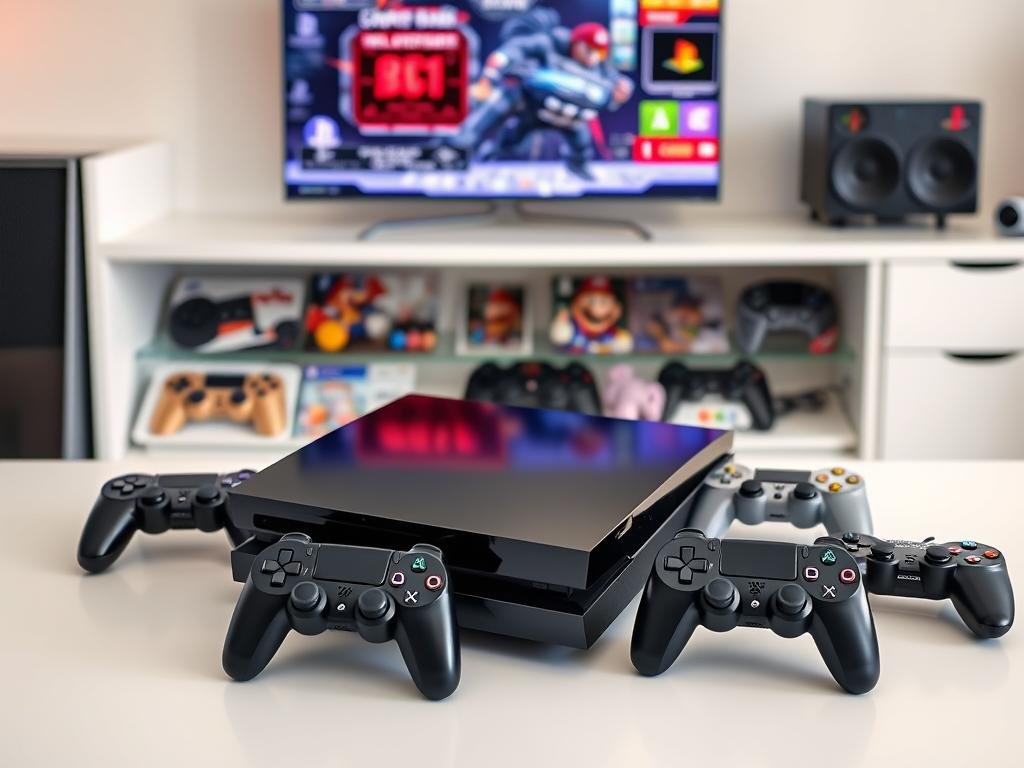
Technical Approaches to Legacy Support
The PS5’s backward compatibility with PS4 games has set a high standard. For the PS6, Sony will likely use advanced emulation or hardware solutions. This ensures a smooth gaming experience across different generations.
One method could be hardware virtualization, where the PS6 acts like older consoles. This lets older games run smoothly without big changes.
Another option is game streaming or cloud-based services. These services process games on remote servers and stream them to your console. This way, you don’t need super powerful local hardware to play older games.
Digital Collection Preservation
The gaming community cares a lot about preserving digital game collections. The PS6 is expected to keep this tradition alive with backward compatibility. This means your digital library, bought from the PlayStation Store, will stay accessible.
Also, Sony might improve how you manage your digital library. This could include a subscription-based model or better cloud storage options.
Enhanced Performance for Older Titles
The PS6 might also offer better performance for older games. With its more powerful hardware, it could remaster or enhance these games. This means improved graphics, faster loading times, and smoother gameplay.
These enhancements could come through patches or updates. This way, your existing games could look and play better on the PS6 than on the original hardware.
PlayStation6 Price Predictions and Value Proposition
Looking ahead to the PlayStation6, knowing its price is key for gamers and analysts. The cost of a new console generation affects its success and adoption rate.
Historical Pricing Analysis
Sony has kept its console prices competitive over the years. The PS5 started at $399 for the digital and $499 for the standard version. Looking at past PlayStation prices can help guess the PS6’s cost.
The first PlayStation was $299, the PS2 also $299, the PS3 $499, the PS4 $399, and the PS5 $399/$499. This shows Sony balances innovation with affordable prices.
Component Costs and Market Factors
The price of parts like the CPU, GPU, RAM, and storage affects a console’s cost. New tech can make these parts cheaper and more powerful. But, the PS6 will likely have top-notch hardware, which could raise its price.
Market competition and the economy also shape the PS6’s price. Sony needs to invest in new tech while keeping prices competitive.
Potential Pricing Models and Tiers
Sony might offer different PS6 prices, like the PS5’s digital and standard versions. There could also be a premium edition with extra features or a subscription service that includes the console and games.
The PS6’s value will depend on its pricing. A well-priced console with better performance, graphics, and features will likely attract more gamers.
In summary, the PlayStation6’s price is uncertain but influenced by past prices, component costs, and market factors. Gamers should expect a price that matches the console’s value.
Conclusion: Preparing for the Next Generation of Gaming
The excitement is growing as we wait for the PlayStation6. It’s expected to launch between 2026 and 2028. The PS6 will likely have a custom AMD Zen5 processor and an RDNA4-based GPU. This means better graphics and faster frame rates.
The PS6 might also use next-generation PCIe5.0 standards for faster loading. It could also have deeper VR and cloud gaming integration. For more on what to expect, check out PS6 expectations.
The gaming world is eagerly anticipating the PS6. It promises to bring new hardware, VR, and cloud gaming innovations. With backward compatibility and lower latency, the PS6 is set to change gaming forever. Keep an eye out for updates and get ready for the next level of gaming.
FAQ
When is the PlayStation6 expected to be released?
Sony hasn’t announced a release date yet. But, based on past trends, the PS6 might come out in the mid-2020s. It could be as early as 2028, given the PS5 was released in 2020.
What are the rumored hardware specifications of the PS6?
Rumors point to a more powerful processor for the PS6. It might use AMD’s Zen architecture. The GPU could be based on RDNA, leading to better graphics.
Storage is expected to be SSD-based. This should make games load faster and run smoother.
Will the PS6 support backward compatibility with PS5 and older games?
Yes, the PS6 is likely to support backward compatibility. This means you can play your PS5 and older games on the new console. Sony has always supported this feature in their consoles.
What improvements can we expect in the PS6 controller?
The PS6 controller is expected to improve on the DualSense. It might have better haptic feedback and adaptive triggers. There could also be new features like improved motion controls or enhanced accessibility options.
How will the PS6 integrate with PlayStation VR (PSVR) technology?
The PS6 is expected to work well with future PSVR versions. It might offer better resolution, less latency, and new VR features. This could include wireless VR or mixed reality gaming, making VR experiences even better.
What is the expected price of the PS6?
It’s hard to say exactly how much the PS6 will cost. But, based on past prices, component costs, and market trends, it’s likely to be around 0-0 for the basic model.
How will game distribution change with the PS6?
The PS6 is expected to keep moving towards digital game distribution. It might have better cloud gaming, subscription services, and new ways to own and access games.
Will the PS6 support cloud gaming, and how will it work?
Yes, the PS6 is expected to support cloud gaming. It will use an improved version of PlayStation Now. This will need a fast and stable internet connection to work well.



